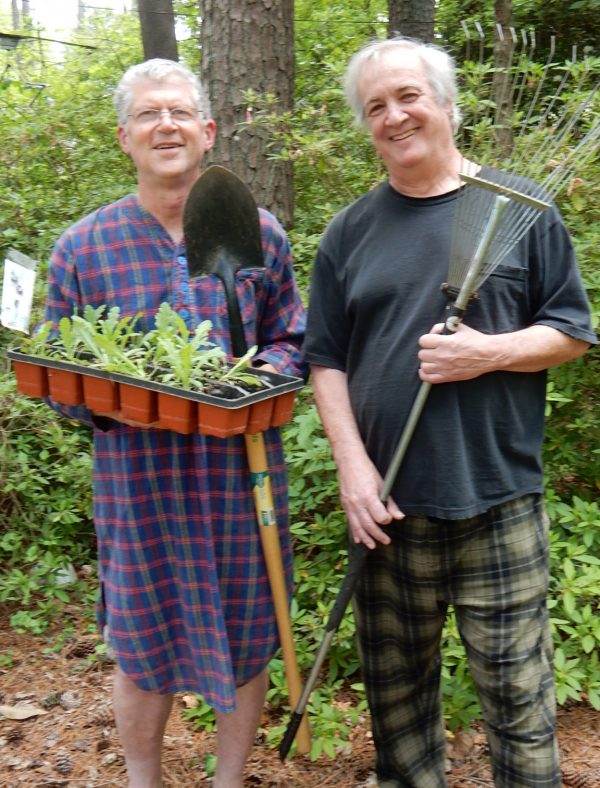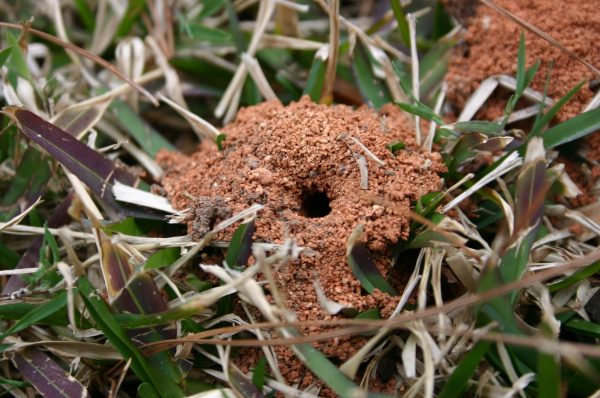Landscaping – Late Summer Jobs
One of the advantages of doing a vocation and avocation for a long time is that you get a feel for what needs to be done and when to do it. Gardening is no different. I gardened (under duress) as a child and I have gardened as an adult for thirty years. Along the way I’ve picked up habits that fit the season and situation of any garden I happen to be in.
I visited Dunaway Gardens in Newnan a few weeks ago. As I talked with Jennifer Bigham, the visionary behind the grand garden restoration, I idly picked faded flowers from daylilies lining the walk to her cottage. Jennifer noted it and laughed that I just couldn’t keep my hands still, even in other folks gardens.
I can’t visit the garden of every reader but I can list the things that need to be done now – because I’m kept busy with them in my garden each week.
CONTROL WEEDS One of the reasons weeds are weeds is their incredible ability to reproduce. A single mulberry weed plant can scatter thousands of seed. Multiple seed capsules of chamberbitter line the midvein of every leaf. I take a tour around my landscape every Sunday spot-spraying herbicide on green interlopers. Spraying is not the only option. Mowing or pulling weeds before they set seed is very effective as long as you remove them all.
The next six weeks open a window of opportunity for chemical weed control. As the plants prepare for autumn they begin pulling resources from their leaves into their roots. If those resources contain herbicide that you very recently applied, the weed is more likely to die. Kudzu, poison ivy, honeysuckle and uncontrolled English ivy all deserve a bit of your “attention” in the next few weeks.
TIE UP ROSES AND BRAMBLES Climbing roses and vining raspberries (and blackberries) are also thinking ahead. For both, now is the time to extend their canes so they can produce more blooms next spring. I keep a hank of jute twine in my pocket when I garden. I cut it into short lengths to tie my raspberries to their wire arbor and my wife’s roses to their trellis.
If left on the ground long enough, raspberries and blackberries will root in place. If that happens, mark the spot with a stake and come back in October. You can then cut the cane away from its mother and transplant it back to the bramble patch.
PICK FADED FLOWERS Besides tying up the roses, I clip out faded blooms. My ‘Knockout’ rose has bloomed steadily since May but it stops if too many old, faded flowers are on it. Prune your shrub rose down to the first five-leaflet leaf beneath tattered flowers and they will make new growth (and new flowers) by late September.
Summer heat and thunderstorms have taken their toll on the flowers of many landscape plants. Don’t hesitate to take off faded blossoms (deadheading) whenever you see them. As with the rose, the plants may rejuvenate and bloom again in fall.
PRUNE LIMBS The simple rule concerning pruning shrubs and trees in summer is “Removing less than one-fourth of the foliage, if needed, won’t hurt them at all.” My wife pointed out that limbs of our flowering cherry were scratching the roof and hanging low over our sidewalk. I got out my pole pruner (a wonderful tool!) and made short work of the task.
Azaleas have already begun to form buds for next spring’s flowers but if yours are scraggly and unkempt it’s better to prune now than not at all. You won’t likely notice the missing blooms next spring.
Each of the jobs I’ve described isn’t hard. You can accomplish them over two weekends and still have plenty of time to golf or play with the family. Avoiding the chores, though, does neither you nor your landscape any good!











